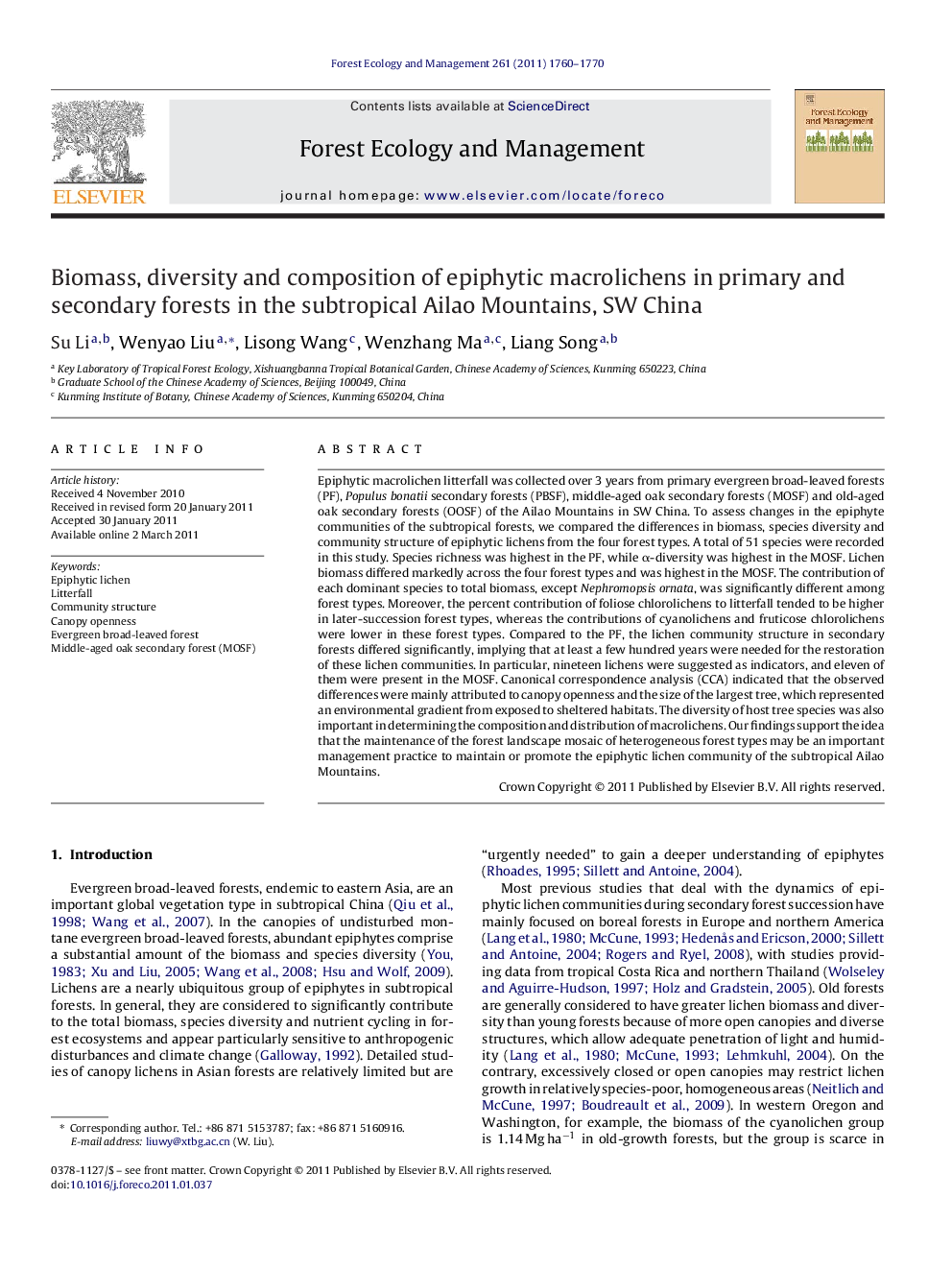| Article ID | Journal | Published Year | Pages | File Type |
|---|---|---|---|---|
| 87865 | Forest Ecology and Management | 2011 | 11 Pages |
Epiphytic macrolichen litterfall was collected over 3 years from primary evergreen broad-leaved forests (PF), Populus bonatii secondary forests (PBSF), middle-aged oak secondary forests (MOSF) and old-aged oak secondary forests (OOSF) of the Ailao Mountains in SW China. To assess changes in the epiphyte communities of the subtropical forests, we compared the differences in biomass, species diversity and community structure of epiphytic lichens from the four forest types. A total of 51 species were recorded in this study. Species richness was highest in the PF, while α-diversity was highest in the MOSF. Lichen biomass differed markedly across the four forest types and was highest in the MOSF. The contribution of each dominant species to total biomass, except Nephromopsis ornata, was significantly different among forest types. Moreover, the percent contribution of foliose chlorolichens to litterfall tended to be higher in later-succession forest types, whereas the contributions of cyanolichens and fruticose chlorolichens were lower in these forest types. Compared to the PF, the lichen community structure in secondary forests differed significantly, implying that at least a few hundred years were needed for the restoration of these lichen communities. In particular, nineteen lichens were suggested as indicators, and eleven of them were present in the MOSF. Canonical correspondence analysis (CCA) indicated that the observed differences were mainly attributed to canopy openness and the size of the largest tree, which represented an environmental gradient from exposed to sheltered habitats. The diversity of host tree species was also important in determining the composition and distribution of macrolichens. Our findings support the idea that the maintenance of the forest landscape mosaic of heterogeneous forest types may be an important management practice to maintain or promote the epiphytic lichen community of the subtropical Ailao Mountains.
Research highlights► Higher biomass, more indicators and more rare species occurred in middle-aged oak secondary forest. ► Canopy openness, the largest trees and the diversity of host trees were important drivers. ► Nineteen indicators can be used in environmental monitoring. ► Forest landscape mosaic may be an important practice to promote lichen community.
